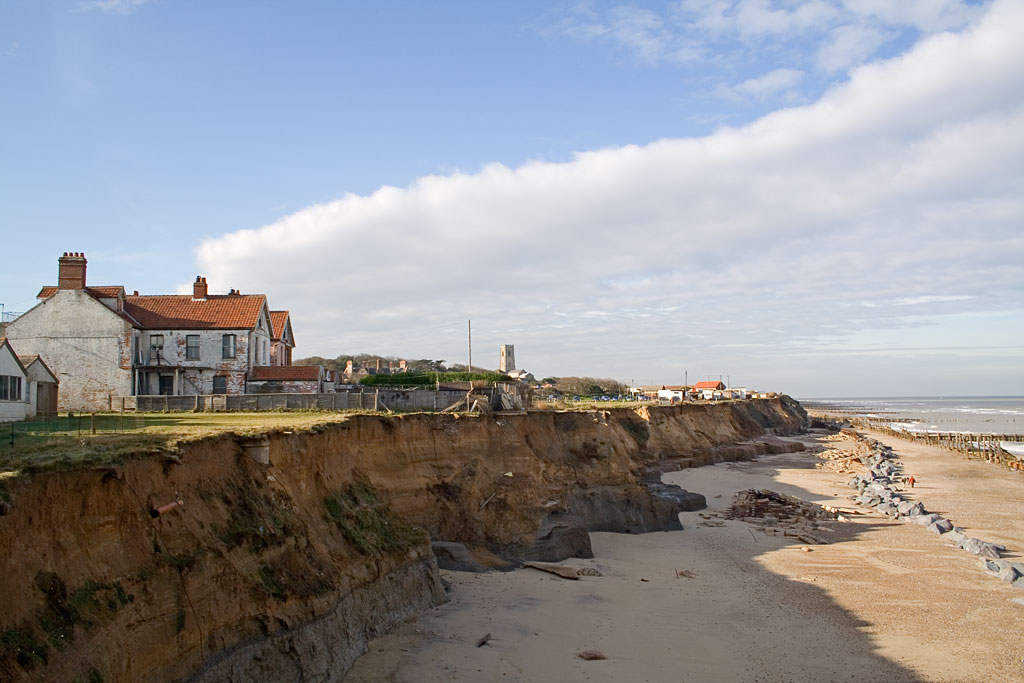Erosion is the movement of rock fragments (sediments), soil, or dissolved matter (which can be nutrients or pollutants) by wind, water, ice, or gravity. Weathering facilitates erosion, while the eventual deposition of these materials is called sedimentation.
A variety of human activities and environmental processes can affect erosion, including:

Coastal erosion threatening property and homes along a coastline in England. Source: Wikimedia
- Rain, rivers, wind, flooding from extreme weather, ocean waves, and the movement of ice (glaciers).
- Steep slopes, formed by the uplift or sinking of land, can result in landslides.
- Deforestation, habitat loss, and agricultural activities. Removing trees and plants, plowing fields, and overgrazing by livestock disrupts roots that stabilize sediment and soil. These human activities can increase erosion rates 10 to 100 times that of non-human geologic processes. In turn, increasing erosion decreases soil quality, and decreases water quality by increasing sediment and pollutants in rivers and streams.
- Urbanization and the paving land with concrete can increase water runoff, increasing erosion.
- Human structures, such as coastal harbors and jetties, can simultaneously trap sediments, decreasing erosion, while increasing erosion rates on adjacent coastlines.
- Damming rivers and extracting water from freshwater ecosystems for human use can decrease erosion, altering habitats and ecosystems.
Can you think of additional cause and effect relationships between erosion rates and other processes and phenomena in the Earth system?
Visit the weathering and sedimentation pages to explore more connections between the rock cycle and global change processes and phenomena.
